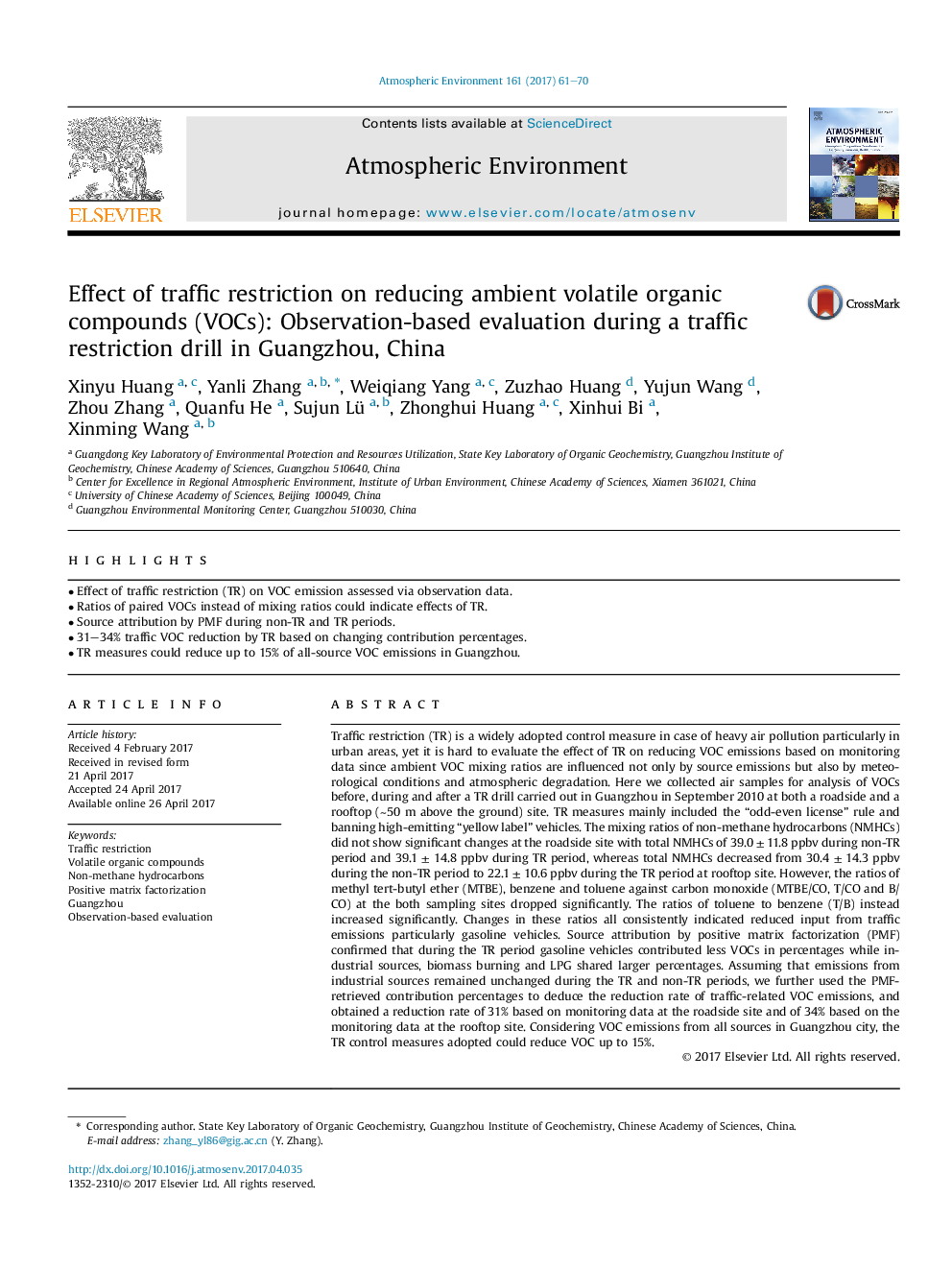| کد مقاله | کد نشریه | سال انتشار | مقاله انگلیسی | نسخه تمام متن |
|---|---|---|---|---|
| 5753231 | 1620313 | 2017 | 10 صفحه PDF | دانلود رایگان |

- Effect of traffic restriction (TR) on VOC emission assessed via observation data.
- Ratios of paired VOCs instead of mixing ratios could indicate effects of TR.
- Source attribution by PMF during non-TR and TR periods.
- 31-34% traffic VOC reduction by TR based on changing contribution percentages.
- TR measures could reduce up to 15% of all-source VOC emissions in Guangzhou.
Traffic restriction (TR) is a widely adopted control measure in case of heavy air pollution particularly in urban areas, yet it is hard to evaluate the effect of TR on reducing VOC emissions based on monitoring data since ambient VOC mixing ratios are influenced not only by source emissions but also by meteorological conditions and atmospheric degradation. Here we collected air samples for analysis of VOCs before, during and after a TR drill carried out in Guangzhou in September 2010 at both a roadside and a rooftop (â¼50 m above the ground) site. TR measures mainly included the “odd-even license” rule and banning high-emitting “yellow label” vehicles. The mixing ratios of non-methane hydrocarbons (NMHCs) did not show significant changes at the roadside site with total NMHCs of 39.0 ± 11.8 ppbv during non-TR period and 39.1 ± 14.8 ppbv during TR period, whereas total NMHCs decreased from 30.4 ± 14.3 ppbv during the non-TR period to 22.1 ± 10.6 ppbv during the TR period at rooftop site. However, the ratios of methyl tert-butyl ether (MTBE), benzene and toluene against carbon monoxide (MTBE/CO, T/CO and B/CO) at the both sampling sites dropped significantly. The ratios of toluene to benzene (T/B) instead increased significantly. Changes in these ratios all consistently indicated reduced input from traffic emissions particularly gasoline vehicles. Source attribution by positive matrix factorization (PMF) confirmed that during the TR period gasoline vehicles contributed less VOCs in percentages while industrial sources, biomass burning and LPG shared larger percentages. Assuming that emissions from industrial sources remained unchanged during the TR and non-TR periods, we further used the PMF-retrieved contribution percentages to deduce the reduction rate of traffic-related VOC emissions, and obtained a reduction rate of 31% based on monitoring data at the roadside site and of 34% based on the monitoring data at the rooftop site. Considering VOC emissions from all sources in Guangzhou city, the TR control measures adopted could reduce VOC up to 15%.
Journal: Atmospheric Environment - Volume 161, July 2017, Pages 61-70